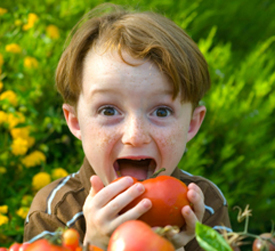Global Scans · Food & Agriculture · Weekly Summary

- [New] The relatively early deployment of onshore wind in the UK means that growing numbers of wind farms are expected to come offline in the next decade. GOV.UK
- [New] We construct trends for shares of ASF to converge by 2050 to upper limits for animal-source products (eggs, dairy, meat) recommended by EAT Lancet as well as for other shares of food groups. Nature
- [New] With a global push towards sustainability and food resilience, fermentation will remain an integral component of strategies aimed at ensuring food security for all. Barry News
- [New] The trend towards traditional preservation methods is expected to persist as we approach 2025, with a focus on sustainability and authenticity in food production. Barry News
- [New] Pangasius is a key fish species that provides economic opportunities for farmers and a dependable, nutritious product for consumers globally. Nature
- [New] The world population is rapidly increasing and is projected to reach 9.8 billion by 2050, leading to a doubling in the demand for food from aquatic sources also emerging need of a blue revolution and ensure long-term aquatic food production that meets societal challenges and viability. Nature
- [New] Any deterioration in security could negatively impact growth and worsen food insecurity. Latest News In Nigeria, Nigeria News Today, Your Online
- [New] A recent study highlights the alarming effects of climate change on global food security, projecting that a rise of 1 °C in global temperatures will result in a 4% decrease in per capita calorie availability by the year 2100. EDUREV.IN
- [New] Rethinking the global food system by promoting sustainable agricultural practices is essential to reduce risks to health and biodiversity, ensuring a more resilient and equitable future. BioMed Central
- [New] Lithuania has passed legislation that bans access to management systems of solar and wind farms by companies from countries that pose a threat to national security. European Council on Foreign Relations (ECFR)
- [New] In the heart of Tunisia's agricultural zone, the Kairouan Agro Solar Canopy project plans to install 30 MW of PV panels above farmland. Abhijeet Shirke
- [New] Ecosystem Threats in Tunisia's Tunisia, a North African country with a Mediterranean coastline and vast desert hinterlands, is facing a variety of environmental challenges that threaten the health of its ecosystems and the sustainability of its agricultural sectors. Abhijeet Shirke
- [New] Tunisia has become more reliant on food imports, undermining food sovereignty and increasing vulnerability to global price shocks. Abhijeet Shirke
- [New] Climate Change Slashes Food Output, Raises Prices: Rising temperatures could cut global food production by 120 calories per person daily per degree Celsius, warns a Nature study, while deforestation for crops drives emissions. The Most Important News
- [New] Over the next 25 years, England's landscapes will need to change to support climate change mitigation and adaptation, economic growth, housing delivery, food production, clean energy, and meeting statutory targets for nature. GOV.UK
- [New] Agrifirm and UBM Group have agreed that Agrifirm Hungary will become part of UBM Group, marking an important step in the further consolidation of the agricultural sector in Hungary. All About Feed
- Weather-related crop shortfalls in southern Malawi and eastern Madagascar threaten food security, highlighting vulnerabilities to climate change and SDG 13 (Climate Action). sdgtalks EN
- Around half of the world's population currently suffers from high water stress at least one month per year, threatening secure delivery of water, food, health, jobs, and energy. WaterBlog@KTH: Reflect, Rethink, Refill
- As the world rapidly warms, levels of tropospheric ozone are projected to increase in all business-as-usual scenarios, exacerbating the most damaging impacts of climate change and harming health, agriculture and ecosystems. Clean Air Fund
- More than one million Palestinians are experiencing emergency levels of food insecurity, with growing risks of severe malnutrition and disease due to hunger and poor sanitary conditions. The IRC
- Restricting access to widely used crop protection tools could have severe negative effects on U.S. agriculture, including lower yields, higher costs, and increased food prices. VisaVerge
- Food System Stress - The UN warned that 13 countries are at risk of acute food insecurity or famine. Age of Transformation
Last updated: 06 July 2025
